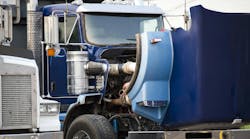With the recent announcement from Continental that the first licensee has been signed for its new ContiLifeCycle dealer network, fleets can expect more changes in the already crowded lineup of retread manufacturers. Prior to the Continental expansion, Bridgestone, Goodyear and Michelin (the Big Three) were the only tire companies to offer a retreading system for their new tire dealers. Now that there is another player in the game, the industry should prepare for more shifts.
First and foremost, it's important to recognize that there is very little “new” retread business so any gains by one company will likely come at the expense of another. According to industry estimates, about 14.3 million truck tires were retreaded in 2010 and more than 93% of that business was controlled by Bridgestone, Goodyear and Michelin. While each of those tread rubber manufacturers have company-owned retread plants and distribution channels, they still rely heavily on their independent dealer network. With another option on the table, the competition for those dealers will reach a fever pitch as the battle for market share heats up.
Retread technology has improved significantly over the past few years, which makes it much easier for a company like Continental to enter the race. Many of the independent retreaders that are still in business have the in-house expertise and equipment to make any system work because they have learned to become less dependent on the tread rubber companies. In the old days, switching from one supplier to another was a lengthy process that could interrupt business for an extended period of time. With the advancements in technology, it's reached the point where some retreaders could switch suppliers tomorrow without skipping a beat.
The current marketing strategies for the major retread manufacturers put a lot of emphasis on the premise that using Brand A's rubber compound and design that is identical to the Brand A original casing will yield better performance. While I don't have any data to prove or disprove that ideology, I can say that the appearance of a “replica retread” can be difficult to distinguish from a new tire to the untrained eye. At the recent Technology & Maintenance Council SuperTech meeting, the contestants and attendees were asked to “spot the retreads.” Sponsored by the Tire Retread and Repair Information Bureau, it was surprising to see how many people had trouble determining which tires were retreads and which tires were brand new. For someone like me, it's easy because I know what to look for. But the average fleet executive or technician is going to have to look very closely to tell the difference.
It's difficult to predict whether or not ContiLifeCycle will cut into the market share of the Big Three because so much of that business is tied to national accounts. Another retread company named Marangoni entered the North American market about 13 years ago and a lot of people thought they would never make it in the U.S. under similar conditions. They've grown to the point where they currently have a 4% share of the retread business because they have independent retreaders who believe in the product. With 4% of the replacement truck tire market already in place, it would appear that Continental has a chance if its dealers get on board.
In the real world, however, physical appearance and marketing campaigns have very little meaning to a fleet. It's all about cost and performance, so the success of any retread company will be determined by the customers — as it has always been.
Kevin Rohlwing can be reached at [email protected]


